.png)
But by reimagining order fulfillment, I helped the Family Store achieve a 250% increase in average monthly orders in the first year post-launch.
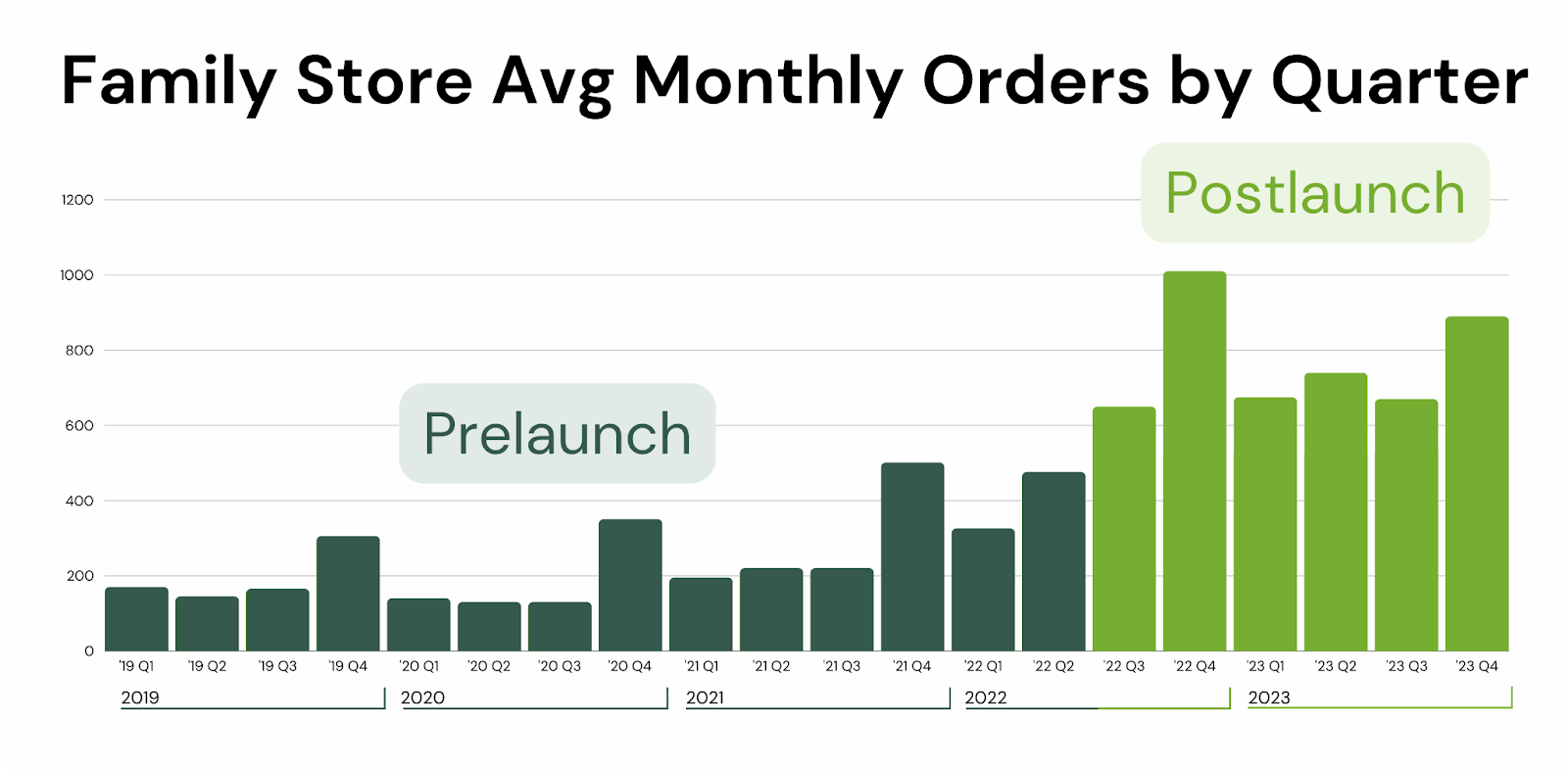
Wellspring Family Store is an invaluable free resource for families struggling to afford essential needs. However, until 2020, its reach was limited by paper choked operations. Shoppers gained access to the store with a physical referral slip. This was cumbersome, so referring case managers often emailed or faxed loose copies to the store manager. The store had two employees and a team of volunteers, but it was filling only single-digit orders every day (7-8, or about 150/mo).
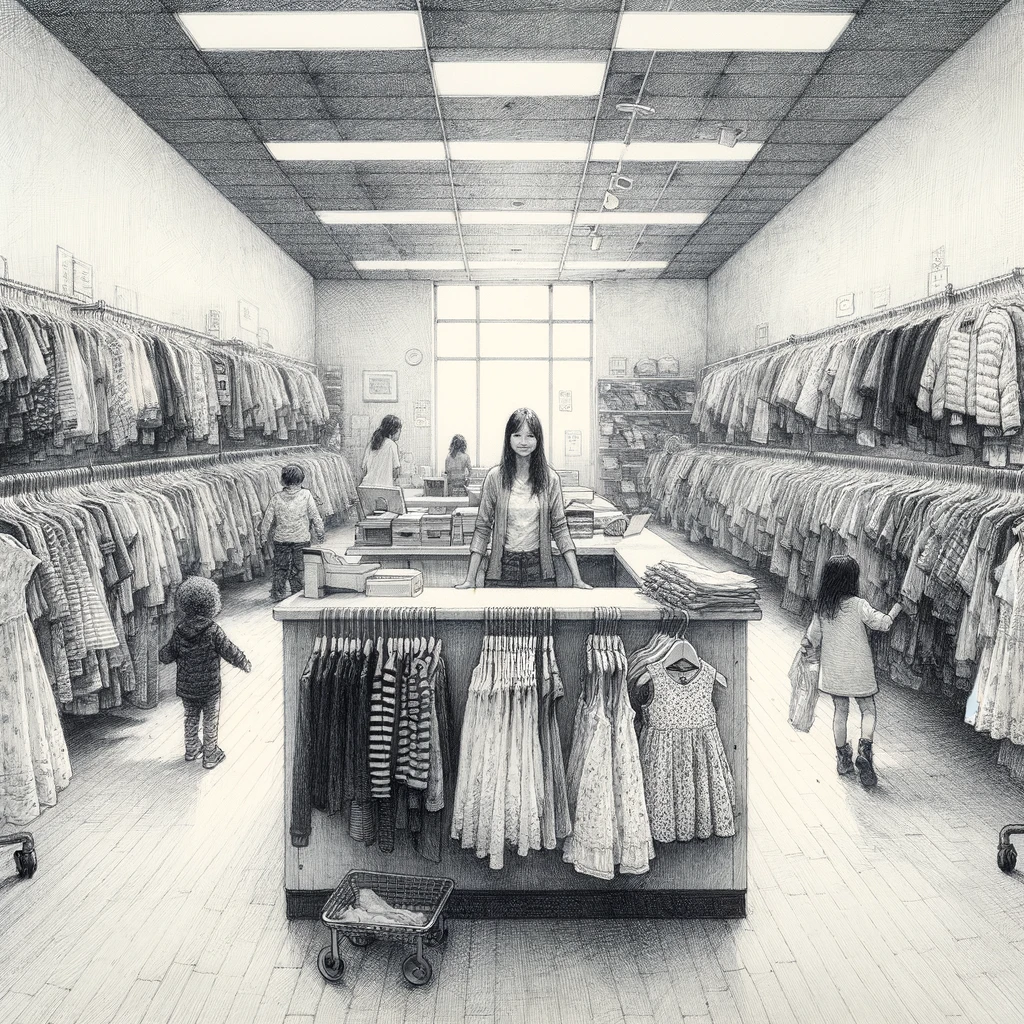
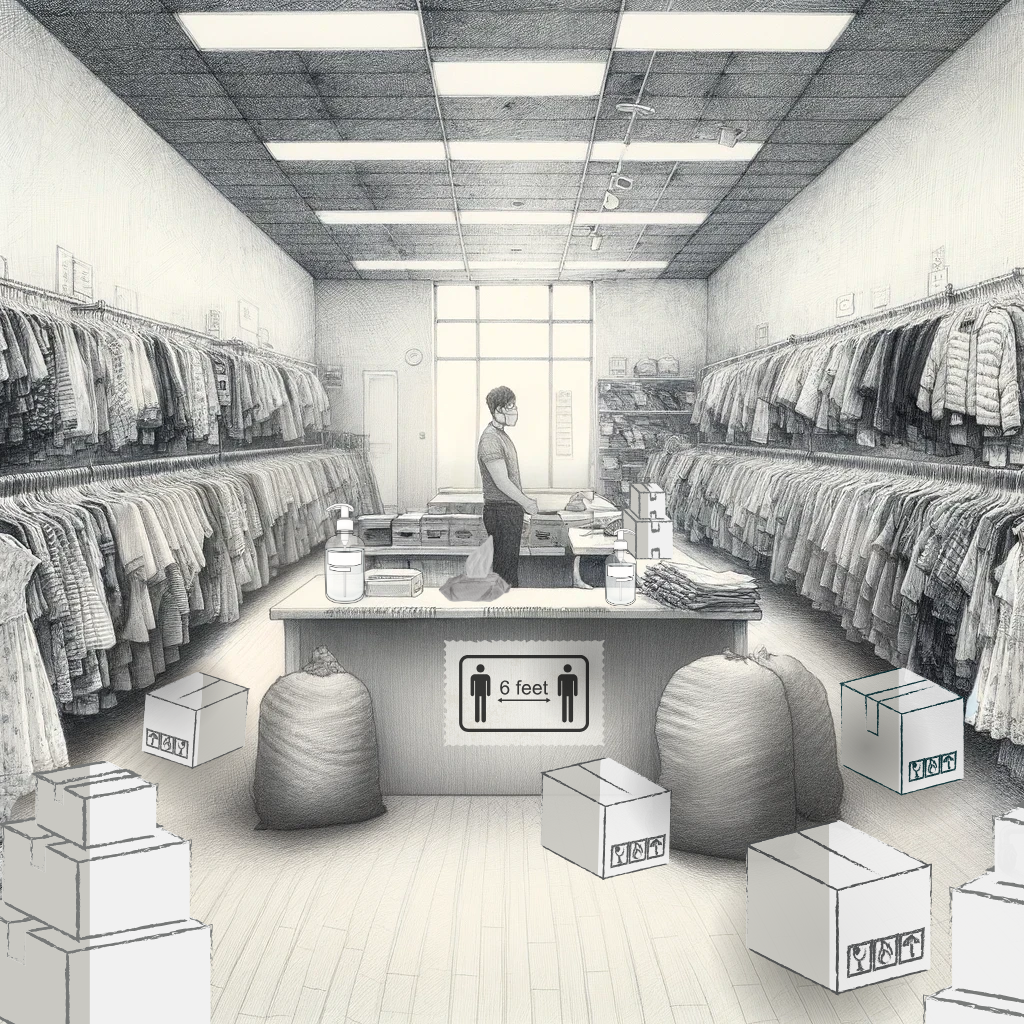
When the pandemic hit, the store stopped in-person shopping. The store became a warehouse, with staff filling orders using half-complete information handwritten on yet another paper form handed out at the front door.
Over time, referring providers began emailing and faxing copies of the order form, bypassing referral entirely, with critical impacts on data quality. Despite increased COVID-era need, by the end of 2021, daily shopping trips still averaged only 13 daily (about 270 per month).
As one of only 4 technical resources at the agency, I was responsible for end-to-end discovery, design, build, and delivery.
I interviewed the Store Manager, referring providers, the Front Desk, and program leadership to determine key project goals.
Based on the results of my discovery, I compiled and prioritized areas for improvement, like:
With a scope of work identified, I identified a north star metric – average monthly orders fulfilled – and designed a new fully-digital workflow. Our aim was to streamline operations through referral, order, and fulfillment, enabling the Family Store to scale.
Using Formstack Platform, I used form submission logic to deliver highest-priority features first, eliminating the use of paper referral and order forms in September 2022.
In the months after launch, we identified additional workflow bottlenecks, such as the difficulty of filling orders without a dedicated Pack List. To address this issue, I worked with the Store Manager to co-design and build templates that used merge fields to generate printable Pack Lists.
As order volumes increased throughout 2023 into 2024, staff had less capacity to manage on-demand pick up and complete manual data entry. To address this emerging concern, I collaborated with other technical and program stakeholders to deliver:
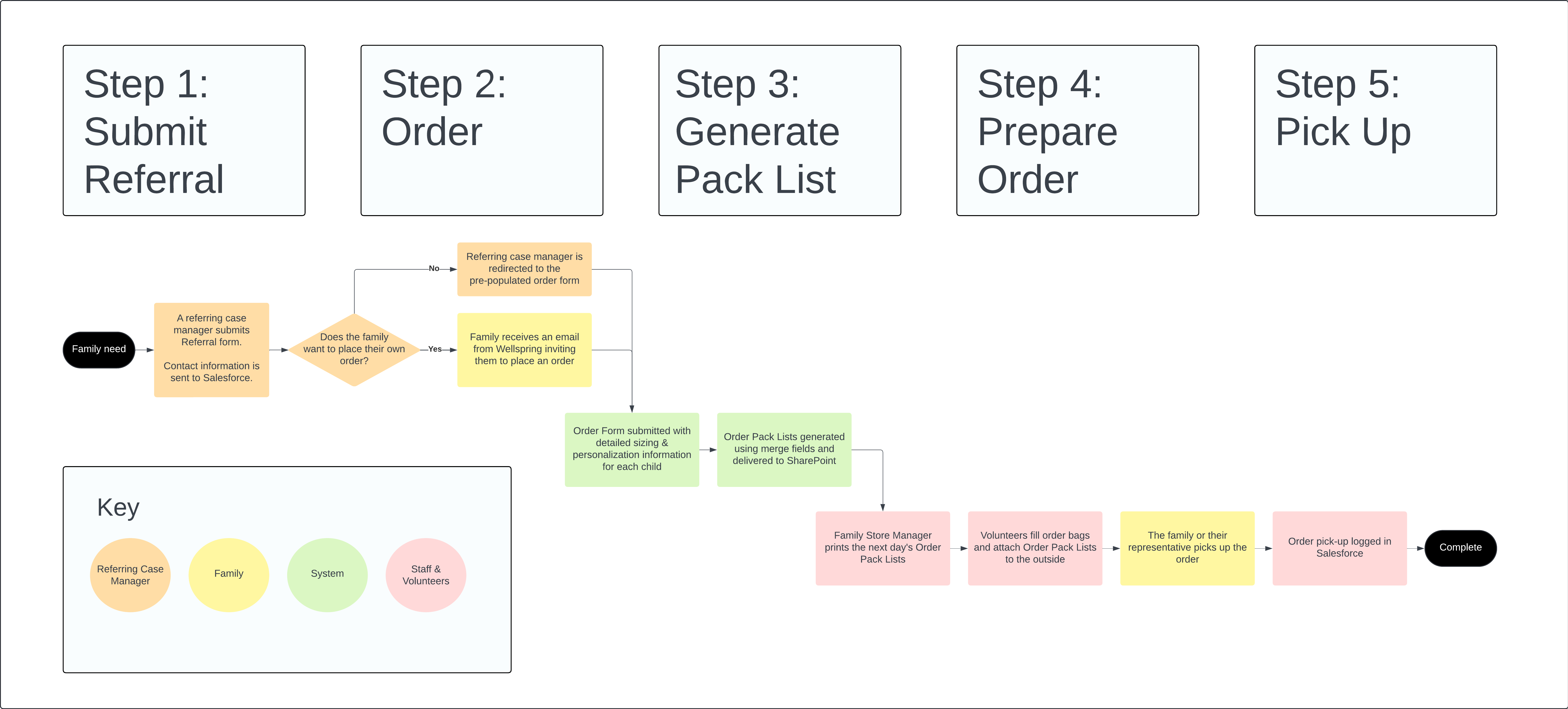
Here's a taste of the results we saw, starting Q1 post-launch.
Within the first quarter of our MVP launch in September 2022, we saw a dramatic increase in referrals and orders from an average of about 440 trips per month to over 600 trips per month for the first time in the store’s history. (This amounts to about 30 orders per day). Referring providers said referral was simpler and faster, allowing them to more complete and submit multiple referrals at once. Easy discovery from the agency website also spurred discovery and catalyzed WOM growth.
Because ordering was more intuitive and accessible, average orders per family increased in the year after launch. While the majority (68%) of growth in shopping trips was attributable to new customer acquisition, an additional 32% of the growth was linked to an increase in return orders. Average orders per family rose from 1.5 in 2021 to 2.0 in 2023, demonstrating customer value.
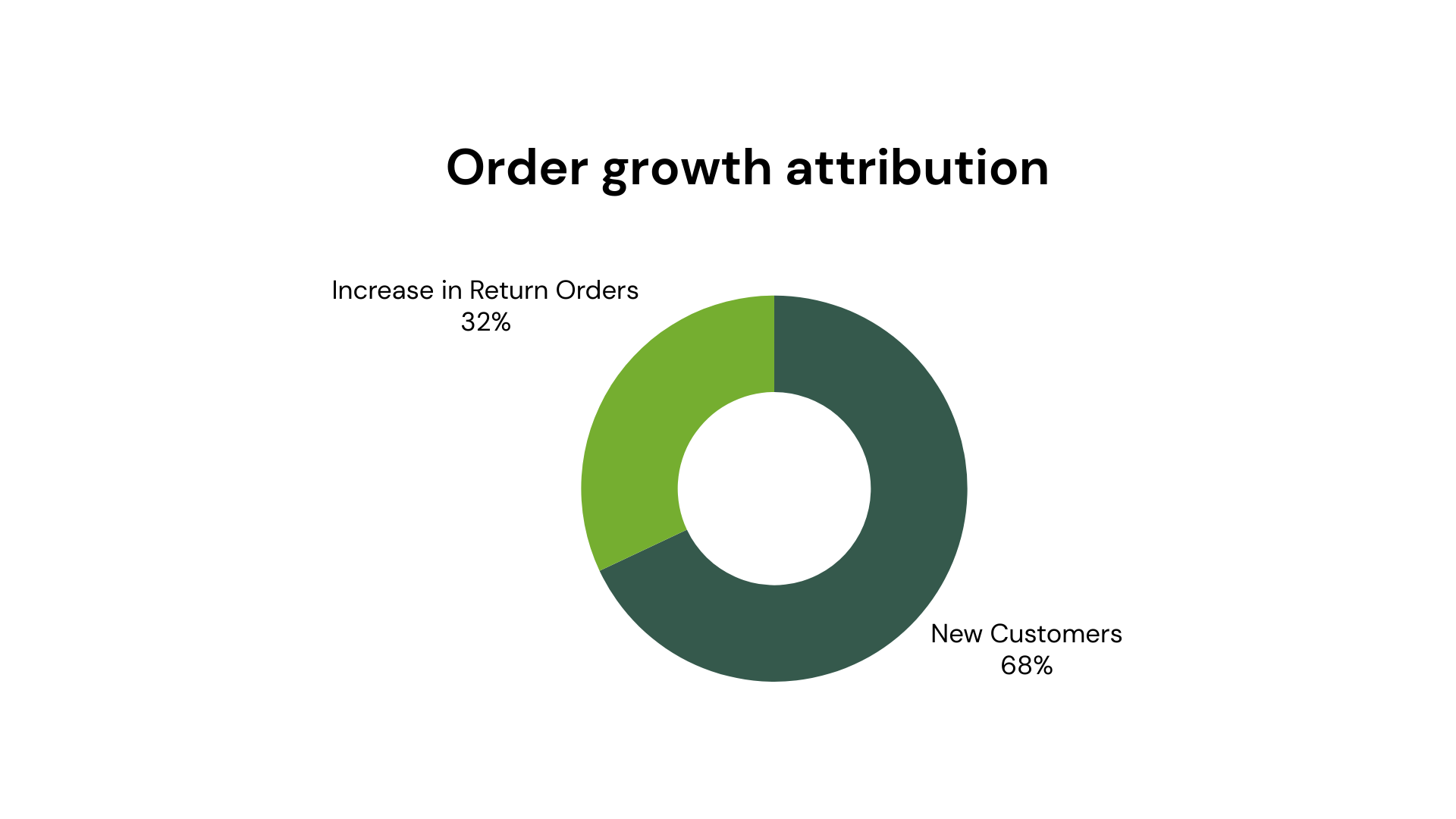
Because digital forms can require fields, completion of basic demographic questions increased from 75% to 100%, easing compliance concerns and bolstering confidence in the data used to fundraise for the Store.
With increased orders, manual data entry soon became untenable. In 2021, each order required 15 minutes to enter data for the Referral, Pack List, and Fulfilled Order.
Because the store was affected by layoffs in Q4 of 2023, these automations became critical in preventing store closures due to overrun capacity.
“I can’t imagine going back. I’m proud of what we’ve accomplished in this partnership.” -Store Manager
